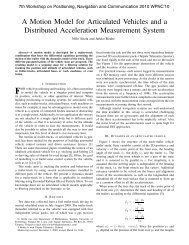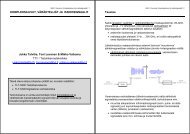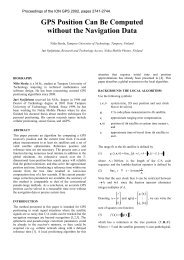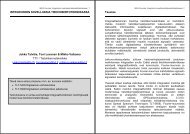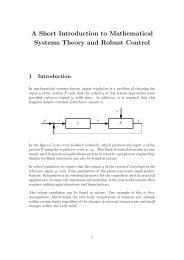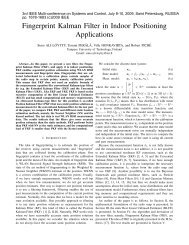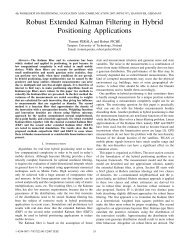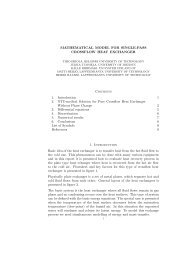Antti Lehtinen Doppler Positioning with GPS - Matematiikan laitos
Antti Lehtinen Doppler Positioning with GPS - Matematiikan laitos
Antti Lehtinen Doppler Positioning with GPS - Matematiikan laitos
You also want an ePaper? Increase the reach of your titles
YUMPU automatically turns print PDFs into web optimized ePapers that Google loves.
Recently, a project similar to the <strong>GPS</strong> has also been launched in the Europe. The<br />
project is called Galileo. The Galileo satellite system is planned to be perfectly<br />
compatible to the <strong>GPS</strong>. This is a benefit, because the same receivers can use<br />
either or both of the systems. The main difference between Galileo and <strong>GPS</strong><br />
is that Galileo has not been planned to be used by the military. Galileo is a<br />
completely civil project, which is funded by the European Union and various<br />
European companies. The Galileo system is expected to be operational in 2008<br />
[ESA].<br />
3.2 The Basic Concepts<br />
3.2.1 Reference Coordinate Systems<br />
In every kind of navigation one needs some reference coordinate system. In <strong>GPS</strong><br />
this is an important issue, since the natural coordinate systems for the satellites’<br />
positions and for the receiver’s position are different.<br />
The Earth-centred inertial (ECI)coordinate system is particularly suitable for<br />
determiningthe orbits of the satellites [Kaplan, p. 23]. The origin of the ECI<br />
system is at the centre of mass of the Earth. The equations of motion of the <strong>GPS</strong><br />
satellites can be modelled as if the ECI system were unaccelerated.<br />
For the purposes of computingthe position of a <strong>GPS</strong> receiver, it is more convenient<br />
to use a coordinate system that rotates <strong>with</strong> the Earth. This coordinate<br />
system is called Earth-centred Earth-fixed (ECEF)system. A stationary receiver<br />
on the surface of the Earth is stationary also in the ECEF coordinate system.<br />
Thus, the natural coordinate system for the satellites is ECI and that for the<br />
receiver is ECEF. The normal procedure is to compute the satellite orbits in<br />
the ECI system and then transform them to the ECEF system. Thereafter, the<br />
receiver position is computed in the ECEF system. In this thesis, unless otherwise<br />
specified, all the given coordinates will be in the ECEF coordinate system.<br />
3.2.2 Range <strong>Positioning</strong><br />
<strong>GPS</strong> has been designed to be a time-of-arrival positioningsystem. This means<br />
that the receiver’s position is determined by measuringthe time that the <strong>GPS</strong><br />
signal uses to travel from the satellite to the receiver. With the knowledge that<br />
the signal travels <strong>with</strong> the speed of light c, the satellite-to-receiver range can<br />
be computed. When range measurements are simultaneously performed <strong>with</strong><br />
8




